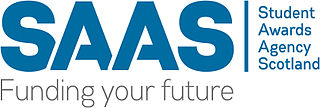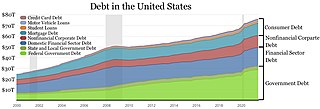Tuition payments, usually known as tuition in American English and as tuition fees in Commonwealth English, are fees charged by education institutions for instruction or other services. Besides public spending, private spending via tuition payments are the largest revenue sources for education institutions in some countries. In most developed countries, especially countries in Scandinavia and Continental Europe, there are no or only nominal tuition fees for all forms of education, including university and other higher education.

A student loan is a type of loan designed to help students pay for post-secondary education and the associated fees, such as tuition, books and supplies, and living expenses. It may differ from other types of loans in the fact that the interest rate may be substantially lower and the repayment schedule may be deferred while the student is still in school. It also differs in many countries in the strict laws regulating renegotiating and bankruptcy. This article highlights the differences of the student loan system in several major countries.
Tuition fees were first introduced across the entire United Kingdom in September 1998 under the Labour government of Tony Blair to fund tuition for undergraduate and postgraduate certificate students at universities; students were required to pay up to £1,000 a year for tuition. However, as a result of the new devolved national administrations for Scotland, Wales and Northern Ireland, there are now different arrangements for tuition fees in each of the nations.
The Free Application for Federal Student Aid (FAFSA) is a form completed by current and prospective college students in the United States to determine their eligibility for student financial aid.
Student financial aid in the United States is funding that is available exclusively to students attending a post-secondary educational institution in the United States. This funding is used to assist in covering the many costs incurred in the pursuit of post-secondary education. Financial aid is available from federal and state governments, educational institutions, and private organizations. It can be awarded in the form of grants, loans, work-study, and scholarships. In order to apply for federal financial aid, students must first complete the Free Application for Federal Student Aid (FAFSA).

The Ontario Student Assistance Program (OSAP) (French: Régime d'aide financière aux étudiantes et étudiants de l'Ontario ) is a provincial financial aid program that offers grants and loans to help Ontario students pay for their post-secondary education. OSAP determines the amount of money that a student is eligible to receive by considering factors such as tuition, course load, and the financial resources of the student. More than 380,000 students – more than half of all full-time students –received student financial aid in 2014-15.

The HOPE Program created in 1993 under the supervision of Georgia Governor Zell Miller, is Georgia's scholarship and grant program that rewards students with financial assistance in degree, diploma, and certificate programs at eligible Georgia public and private colleges and universities, and public technical colleges. HOPE is funded entirely by revenue from the Georgia Lottery and is administered by the Georgia Student Finance Commission (GSFC).
The Tuition Assistance Program is a financial aid program for students who are New York State residents and who are attending a post-secondary educational institution in New York. It is a program of the Higher Education Services Corporation which is a New York State Agency.

The College of Arts, Sciences, and Engineering is one of the primary units of the University of Rochester, encompassing the majority of the undergraduate and graduate enrollment. The College is divided in the units of Arts and Sciences and the Hajim School of Engineering and Applied Sciences. The College is located on the River Campus of the University of Rochester, though some departments maintain facilities on other campuses. The College was established in 1955 upon the merger of the separate colleges for men and women at the university.

Student Awards Agency Scotland (SAAS) is an Executive agency of the Scottish Government. It supports eligible Scottish students by paying their tuition fees, as well as offering bursaries and supplementary grants. It also assesses students applying for loans. The Agency administers the Individual Learning Accounts Scotland scheme (ILA's) in partnership with Skills Development Scotland (SDS).

College tuition in the United States is the privately borne cost of higher education collected by educational institutions in the United States. This does not include the portion that is paid through taxes or from other government funds or that is paid from university endowment funds or gifts through scholarships or grants. Tuition for college has increased as the value, quality, and quantity of education have also increased. These increases have occasionally been controversial.
In discussions of the cost of college in the United States, the cost of attendance (COA) is a statutory term for the estimated full and reasonable cost of completing a full academic year as a full-time student. The cost of attendance is published by each educational institution and includes:
Federal Student Aid (FSA), an office of the U.S. Department of Education, is the largest provider of student financial aid in the United States. Federal Student Aid provides student financial assistance in the form of grants, loans, and work-study funds. FSA is a Performance-Based Organization, and was the first PBO to be established in the US government.
Student loans and grants in the United Kingdom are primarily provided by the government through the Student Loans Company (SLC), an executive non-departmental public body. The SLC is responsible for Student Finance England and Student Finance Wales, and is a delivery partner of Student Finance NI and the Student Awards Agency for Scotland. Most undergraduate university students resident in the United Kingdom are eligible for student loans, and some students on teacher training courses may also apply for loans. Student loans also became available from the 2016/17 academic year to postgraduate students who study a taught Masters, research or Doctoral course.

Student loans in the United States are a form of financial aid intended to help students access higher education. In 2018, 70 percent of higher education graduates had used loans to cover some or all of their expenses.
Student financial aid in Finland consists of government payments that provide economic security to students and enable all students to study. Almost all Finnish students receive financial aid, including foreigners who are permanent residents or EU citizens. It is available in the form of:
Cal Grant is a financial aid program administrated by the California Student Aid Commission (CSAC) providing aid to California undergraduates, vocational training students, and those in teacher certification programs. Cal Grants are the largest source of California state funded student financial aid.
Student debt is a form of debt that is owed by an attending, formerly withdrawn, or graduated student to a lending institution, or to a financial institution.
Student loans in South Korea, are student loans provided to South Korea's students that are managed by the Korea Student Aid Foundation (KOSAF) which was established in May 2009. According to the governmental philosophy that Korea's future depends on talent development and no student should quit studying due to financial reasons, they help students grow into talents that serve the nation and society as members of Korea. Through the management of Korea's national scholarship programs, student loan programs, and talent development programs, KOSAF offers customized student aid services and student loan program is one of their major tasks.






